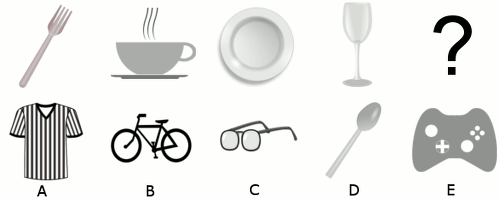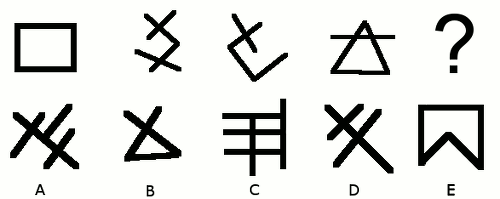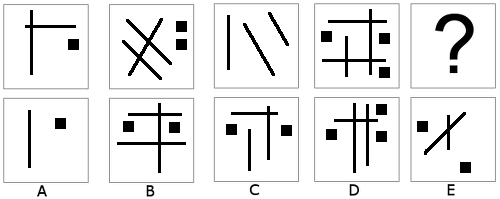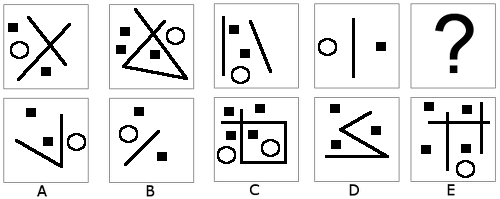Sets
"Set" questions are perhaps the most basic type of non verbal reasoning question. They're all about pattern recognition, an essential skill in many areas of life and at the heart of many NVR tests.In "set" questions you are given a number of pictures or shapes and asked to choose another one that best goes with them. So to solve the question you need to find a common feature that all the shapes in the question have and which is shared by one and only one of the possible answers.
Here's a simple example: which picture in the second line goes best with those in the first line?

Pictures are sometimes used for juniors, tests for older children and adults more often use abstract shapes. Try this one:

Counting is often a key - when in doubt, count everything! Also look out for colours and symmetry.
Sometimes different elements work together, for example:

Finally, here's a more complicated example:

Pattern recognition is at the heart of much non-verbal reasoning. It's a skill worth practising.